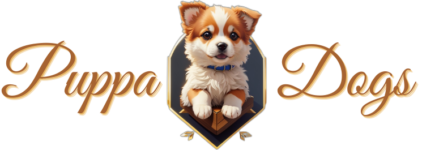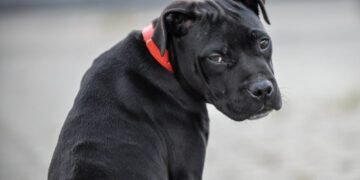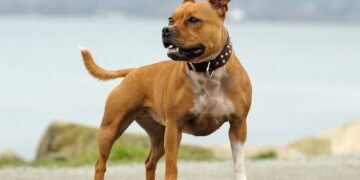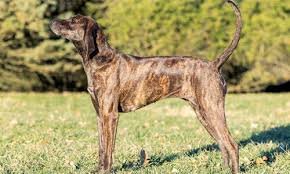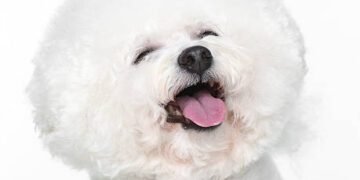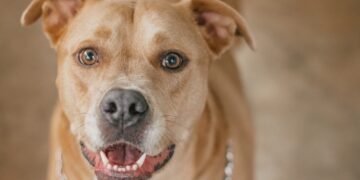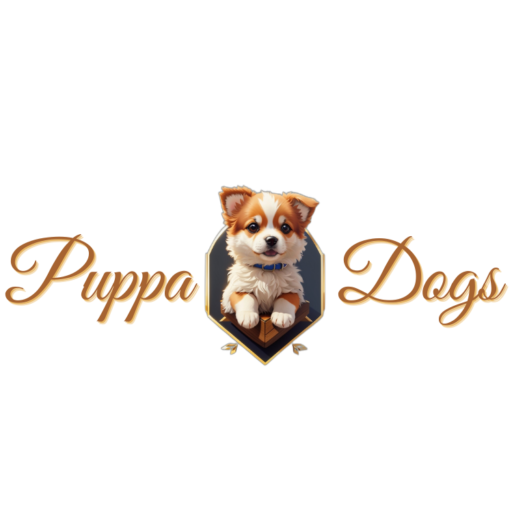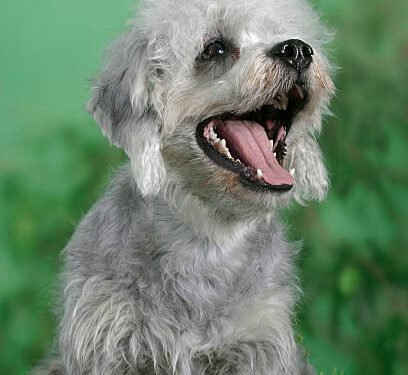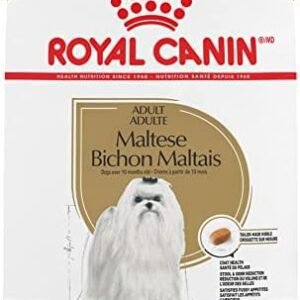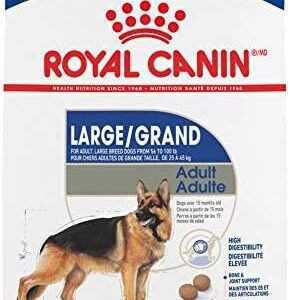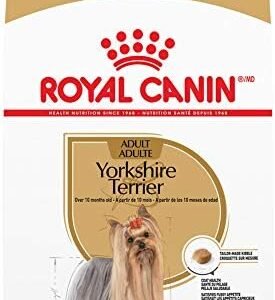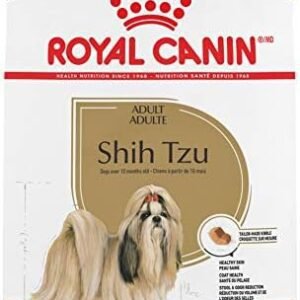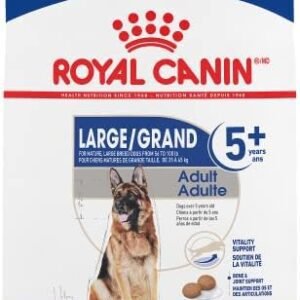Introduction:
Welcoming a four-legged friend into your home is a decision that resonates with a multitude of factors. Among the myriad of dog breeds available, the Dandie Dinmont Terrier stands out as a distinctive and intriguing choice. To embark on a journey with this breed is to embrace a companion that blends unique traits and history. In this article, we’ll delve into the captivating world of the Dandie Dinmont Terrier, exploring what sets them apart and why they might be the perfect addition to your life.

What Makes Dandie Dinmont Terrier Unique:
Before we dive into the specifics, let’s touch on what makes the Dandie Dinmont Terrier truly special. This breed, named after a character in Sir Walter Scott’s novel, possesses a charming combination of qualities that set them apart. From their distinctive appearance to their spirited temperament, Dandie Dinmont Terriers exude a unique charm that captures the hearts of dog enthusiasts worldwide.
Selecting the Right Breed:
Choosing a canine companion goes beyond aesthetic preferences. It involves aligning the dog’s characteristics with your lifestyle. The Dandie Dinmont Terrier’s distinct traits, both in terms of appearance and behavior, make this breed an interesting subject of consideration. Understanding how these factors influence a dog’s needs and interactions is key to fostering a harmonious relationship.
Dandie Dinmont Terrier Overview:
To provide a comprehensive understanding of the Dandie Dinmont Terrier, let’s explore various aspects of this breed through a detailed table. This table encompasses essential information that potential owners need to know.
| Field | Information |
|---|---|
| Height | 8 to 11 inches |
| Weight | 18 to 24 pounds |
| Life Span | 12 to 15 years |
| Good with | families, childrens |
| Temperament | unique |
| Intelligence | highly intelligent |
| Shedding Amount | low to moderate |
| Grooming | impotant |
| Exercise Needs | important daily |
| Energy Level | active and energetic |
| Barking Level | not associated |
| Drool Amount | less likely |
| Coat Length/Texture | moderate |
| Colors | Pepper, mustard |
| Patterns | distinctive |
Please note that the information provided in the table is based on available data. The unique characteristics of the Dandie Dinmont Terrier will be further explored in the following sections, offering insights into their size, temperament, grooming needs, and more.
Table of Contents
Breed History and Origin:
Exploring Their Roots:
The rich history of the Dandie Dinmont Terrier is a fascinating journey that unveils the intentional breeding and historical influences that shaped this distinctive breed. To comprehend the roots of the Dandie Dinmont Terrier, we need to delve into the breeds that played a pivotal role in its development.
- Terrier Ancestry:
The Dandie Dinmont Terrier is firmly rooted in the terrier family. Terriers, known for their tenacity and hunting prowess, were selectively bred to create a smaller-sized terrier suitable for certain hunting tasks. This deliberate breeding laid the foundation for the Dandie Dinmont Terrier’s characteristic traits.
- Border Terrier Influence:
The Border Terrier is considered one of the key contributors to the Dandie Dinmont Terrier’s genetic makeup. With a shared heritage in the border regions of England and Scotland, the Border Terrier brought its resilience and working dog instincts to the mix.
- Dachshund Connection:
Another noteworthy influence on the Dandie Dinmont Terrier’s development is the Dachshund. The introduction of Dachshund bloodlines contributed to the distinctive elongated body shape seen in the Dandie Dinmont Terrier today.
Notable Traits:
The intentional breeding of the Dandie Dinmont Terrier aimed to create a dog with specific traits suited for vermin control, particularly in the rough terrains of the Scottish border regions. Some notable traits that emerged from this selective breeding include:
- Unique Body Structure:
The Dandie Dinmont Terrier boasts a distinctive body structure with a long back and short legs, reminiscent of its Dachshund ancestry. This unique physique sets it apart from other terrier breeds.
- Bravery and Tenacity:
Bred for the purpose of hunting and controlling vermin, the Dandie Dinmont Terrier inherited the terrier family’s inherent bravery and tenacity. This makes them excellent hunters and guardians.
- Distinctive Coat:
The breed’s double coat, consisting of a soft, dense undercoat and a harder, wiry outer coat, provides protection against the harsh weather conditions prevalent in the Scottish borders. The characteristic topknot on their head adds to their unique appearance.
Relevance of Origin:
Understanding the origin of the Dandie Dinmont Terrier is not merely a historical exercise but a key to comprehending their characteristics and behavior today.
- Temperamental Resilience:
The terrier’s resilience, honed through generations of hunting and working, is deeply embedded in the Dandie Dinmont Terrier’s temperament. Their fearless nature and determination can be traced back to their origins as vermin hunters.
- Adaptation to Harsh Environments:
Originating from the rugged border regions, the Dandie Dinmont Terrier developed a robustness that allows them to adapt to various environments. This adaptability makes them suitable for both urban and rural living.
- Hunting Instincts:
The breed’s historical purpose as a hunter of vermin is still reflected in their instincts today. Owners may observe their Dandie Dinmont Terrier displaying natural hunting behaviors, such as digging and exploring.
In summary, the Dandie Dinmont Terrier’s history is a tapestry woven with intentional breeding, regional influences, and a commitment to creating a tenacious and distinctive terrier breed. The traits developed in their formative years continue to shape the charming personality of the Dandie Dinmont Terrier we know today.
Understanding the Dandie Dinmont Terrier Breed’s Traits:
Physical Characteristics:
The Dandie Dinmont Terrier boasts a distinctive set of physical characteristics that contribute to its unique charm and appeal.
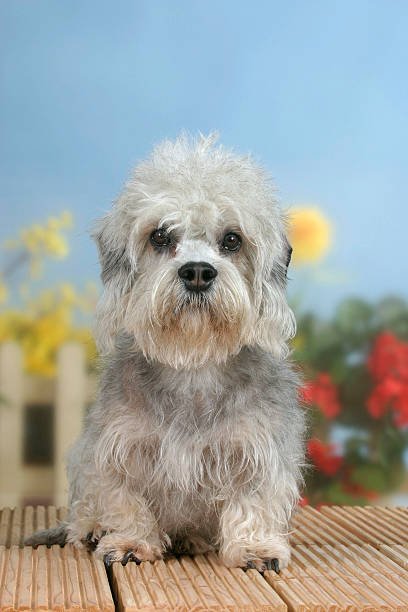
- Size:
While specific data on height and weight might be elusive, the Dandie Dinmont Terrier is generally a small to medium-sized breed. Their compact stature, coupled with the long back and short legs, gives them an endearing and somewhat elongated appearance.
- Coat Type:
One of the standout features of the Dandie Dinmont Terrier is its double coat. The soft, dense undercoat provides insulation, while the harder, wiry outer coat serves as protection against the elements. This coat combination creates a textured and weather-resistant fur that showcases the breed’s adaptability.
- Color and Distinguishing Features:
Dandie Dinmont Terriers are known for their distinctive coloration. Their coat can be pepper (dark bluish-black to light silver-gray) or mustard (reddish-brown to pale fawn). A unique feature is the topknot on their head, adding an element of charm to their overall appearance.
Temperament Overview:
Understanding the temperament of the Dandie Dinmont Terrier is crucial for potential owners considering this breed as a companion. Let’s delve into their temperament traits, exploring their suitability as family pets and any unique personality quirks.

- Family-Friendly Nature:
Dandie Dinmont Terriers, despite their history as hunters, are known for their affectionate nature towards their human family members. They often form strong bonds with their owners, making them loyal and devoted companions.
- Safety with Children:
Due to their relatively small size, Dandie Dinmont Terriers can be a good fit for families with children. However, like any dog breed, it’s essential to teach children how to interact respectfully with the dog, and supervision is recommended, especially with younger kids.
- Compatibility with Other Pets:
The breed’s sociable nature extends to other pets, making Dandie Dinmont Terriers generally compatible with other animals in the household. Early socialization can contribute to positive relationships with other pets.
Environment Needs:
Creating an environment conducive to the well-being of a Dandie Dinmont Terrier involves considering their specific needs and preferences.
- Space Requirements:
Despite their small size, Dandie Dinmont Terriers are active dogs that benefit from regular exercise. While they can adapt to apartment living, providing them with sufficient opportunities for outdoor activities is important for their physical and mental health.
- Temperature Sensitivity:
The breed’s double coat offers some protection against varying temperatures. However, like many small breeds, they may be sensitive to extreme weather conditions. Monitoring their comfort in different temperatures and providing appropriate shelter is advisable.
Common Behavioral Traits:
Every dog breed comes with its own set of behavioral traits, and the Dandie Dinmont Terrier is no exception. Understanding these behaviors helps owners navigate the joys and challenges of living with this unique breed.
- Affectionate Demeanor:
Dandie Dinmont Terriers are known for their affectionate and loving nature. They often seek close companionship with their owners and enjoy being part of family activities.
- Independent Streak:
Despite their affectionate nature, Dandie Dinmont Terriers can also display an independent streak. This trait may be traced back to their history as working dogs, where they needed to make decisions in the field.
- Watchful and Alert:
The breed’s terrier roots contribute to their alertness and watchful nature. Dandie Dinmont Terriers may exhibit barking behavior as a response to perceived threats or unfamiliar stimuli.
In summary, the Dandie Dinmont Terrier’s physical characteristics, temperament traits, environmental needs, and behavioral tendencies collectively contribute to their unique charms. Potential owners willing to embrace the breed’s distinct qualities will find in the Dandie Dinmont Terrier not just a pet but a loyal and fascinating companion.
Popularity and Recognition:
Current Popularity:
In the realm of canine companions, the Dandie Dinmont Terrier may not be as ubiquitous as some of its more commonly known counterparts, but its unique charms have garnered a dedicated following. While not among the most popular breeds, the Dandie Dinmont Terrier has found its place in the hearts of dog enthusiasts who appreciate its distinct appearance and endearing personality.
- Niche Appeal:
The Dandie Dinmont Terrier’s appeal often extends to individuals seeking a breed with a rich history, unique physical traits, and a manageable size. Their distinctive appearance, coupled with a loving temperament, has carved a niche for them among those looking for a companion that stands out from the crowd.
- Trends in Ownership:
Trends in dog ownership are ever-evolving, influenced by factors such as lifestyle, living arrangements, and societal preferences. While the Dandie Dinmont Terrier may not experience the same surge in popularity as some trendy breeds, it maintains a steady presence among those who value its specific attributes.
Breed Recognition:
The recognition of a breed by kennel clubs and breed organizations is a testament to its established standards and unique characteristics. Let’s explore how the Dandie Dinmont Terrier fares in terms of official recognition.
- Kennel Club Recognition:
Various kennel clubs play a crucial role in setting and maintaining breed standards. The Dandie Dinmont Terrier is typically recognized by major kennel clubs, solidifying its status as a distinct and acknowledged breed. Recognition ensures that breeders adhere to established standards, preserving the breed’s integrity.
- American Kennel Club (AKC):
The American Kennel Club, a prominent authority on dog breeds in the United States, includes the Dandie Dinmont Terrier in its roster. This recognition opens avenues for participation in AKC events and competitions, contributing to the breed’s visibility.
- The Kennel Club (UK):
In the United Kingdom, the birthplace of the Dandie Dinmont Terrier, The Kennel Club acknowledges and recognizes
Notable Breed Varieties:
While the Dandie Dinmont Terrier is recognized as a distinct breed, there may be variations or subtypes within the breed that exhibit unique traits. It’s essential to note any notable varieties that add nuances to the Dandie Dinmont Terrier family.
- American vs. English Varieties:
In some cases, Dandie Dinmont Terriers may be categorized based on their geographic origins. While the breed standards remain consistent, there might be subtle differences in appearance or temperament between American and English varieties. These distinctions could be influenced by the preferences and breeding practices in different regions.
- Distinguishing Traits:
Varieties within the Dandie Dinmont Terrier breed may showcase specific traits that enthusiasts and breeders find noteworthy. These could include variations in coat color, size preferences, or subtle differences in conformation. Understanding these nuances adds depth to the appreciation of the breed.
In summary, the Dandie Dinmont Terrier may not top the charts in terms of popularity, but its recognition by kennel clubs and the existence of notable varieties emphasize its enduring appeal. As with any breed, prospective owners should delve into the specifics of Dandie Dinmont Terrier varieties to find the perfect match for their preferences and lifestyle.
Health Considerations and Care:
Common Health Issues:
While the Dandie Dinmont Terrier is generally a hardy breed, like any other, they may be prone to specific health issues. Being aware of these potential concerns can help owners take proactive measures and seek veterinary attention when needed.
- Back Issues:
The distinctive long back of the Dandie Dinmont Terrier, reminiscent of its Dachshund ancestry, can make them susceptible to back problems. Intervertebral Disc Disease (IVDD) is a concern, and owners should be cautious about activities that could strain the dog’s back.
- Eye Conditions:
Dandie Dinmont Terriers are known for their expressive eyes, but they can be prone to certain eye conditions. Issues like cataracts and glaucoma may occur, emphasizing the importance of regular eye check-ups.
- Thyroid Problems:
Some Dandie Dinmont Terriers may experience thyroid-related issues. Regular monitoring of thyroid function can help detect and manage such conditions.
- Obesity:
Due to their compact size, it’s crucial to manage the Dandie Dinmont Terrier’s weight. Obesity can lead to various health issues, including joint problems. A balanced diet and regular exercise are essential components of their well-being.
- Dental Concerns:
Like many small breeds, Dandie Dinmont Terriers may be prone to dental issues. Regular dental care, including brushing and dental check-ups, can contribute to their overall health.
- Skin Conditions:
The Dandie Dinmont Terrier’s double coat requires proper grooming, and neglecting this aspect may lead to skin problems. Regular brushing and inspections help prevent skin issues and ensure the coat remains in good condition.
Lifespan and Longevity:
The average lifespan of a Dandie Dinmont Terrier typically ranges between 12 to 15 years. Several factors contribute to their longevity, and responsible pet ownership plays a crucial role in promoting a healthier and longer life.

- Nutrition:
Providing a well-balanced and nutritionally appropriate diet is fundamental to the Dandie Dinmont Terrier’s health. Consultation with a veterinarian can help determine the specific dietary needs based on factors such as age, weight, and activity level.
- Regular Exercise:
Despite their small size, Dandie Dinmont Terriers are active dogs that benefit from regular exercise. Daily walks, playtime, and mental stimulation contribute to their overall well-being. Exercise helps maintain a healthy weight, promotes cardiovascular health, and prevents behavioral issues.
- Routine Veterinary Check-ups:
Regular visits to the veterinarian are essential for preventive care. Vaccinations, parasite control, and early detection of potential health issues are integral components of routine check-ups. Owners should communicate any observed changes in behavior or health to the veterinarian promptly.
- Dental Care:
Dental health significantly impacts a dog’s overall well-being. Implementing a dental care routine, including regular brushing and providing dental chews or toys, helps prevent periodontal disease and related health issues.
- Weight Management:
Maintaining an optimal weight is crucial for the Dandie Dinmont Terrier’s health. Obesity can contribute to various health problems, including joint issues and cardiovascular issues. Portion control and avoiding excessive treats are essential aspects of weight management.
- Grooming Practices:
The Dandie Dinmont Terrier’s unique coat requires regular grooming. This includes brushing to prevent matting, regular baths, and inspection for any skin issues. Professional grooming may be required periodically.
Care Guidelines:
In addition to addressing specific health issues and promoting longevity, there are general care guidelines that enhance the well-being of Dandie Dinmont Terriers.
- Socialization:
Early and consistent socialization is crucial for Dandie Dinmont Terriers. Exposing them to various people, environments, and other animals helps develop a well-rounded and confident temperament.
- Training:
Positive reinforcement-based training methods work well with Dandie Dinmont Terriers. They are intelligent dogs with a bit of an independent streak, so patience and consistency are key. Basic obedience training and mental stimulation contribute to their overall happiness.
- Comfortable Living Environment:
Creating a comfortable and safe living environment is essential. While Dandie Dinmont Terriers can adapt to apartment living, providing them with a designated space, cozy bedding, and toys enriches their living experience.
- Temperature Considerations:
Due to their sensitivity to temperature extremes, owners should be mindful of the weather. Providing shelter and adjusting outdoor activities based on temperature conditions contribute to their well-being.
- Regular Grooming Sessions:
The Dandie Dinmont Terrier’s grooming needs are unique, and regular sessions are necessary. This includes brushing to prevent tangles, checking and cleaning ears, and maintaining good hygiene. Professional grooming may be required periodically.
- Engaging Toys and Activities:
Dandie Dinmont Terriers enjoy interactive play and mental stimulation. Providing engaging toys and activities prevents boredom and encourages physical and mental exercise.
- Monitoring Health Changes:
Observant owners are better equipped to detect changes in their Dandie Dinmont Terrier’s health. Any sudden shifts in behavior, appetite, or physical condition should prompt a visit to the veterinarian for further assessment.
In conclusion, caring for a Dandie Dinmont Terrier involves a combination of addressing breed-specific health considerations, promoting a healthy lifestyle, and providing a loving and stimulating environment. Responsible ownership and regular veterinary care are essential components of ensuring these unique canine companions lead happy and fulfilling lives.
Personal Stories and Testimonials:
Real-life stories and testimonials from owners of Dandie Dinmont Terriers provide valuable insights into the joys and challenges of sharing life with this unique breed.
Story 1: “Charlie’s Adventurous Spirit”

Charlie, our Dandie Dinmont Terrier, came into our lives as a small bundle of energy and curiosity. His adventurous spirit was evident from day one. Despite his petite size, Charlie approached every new experience with enthusiasm.
One of the remarkable things about Charlie is his intelligence. Training him was a joy, thanks to his quick understanding and eagerness to please. His independent streak meant he enjoyed exploring our backyard, but a simple call brought him back, tail wagging.
As a companion, Charlie is incredibly affectionate. He has this endearing way of curling up on the couch with us, making us feel truly cherished. The bond we share with Charlie is a testament to the Dandie Dinmont Terrier’s loving nature.
However, like any breed, there were challenges. Charlie’s back sensitivity required us to be cautious during playtime. We adapted his activities to ensure he enjoyed exercise without straining his back. Regular veterinary check-ups helped us manage this aspect of his health proactively.
In short, Charlie has brought immeasurable joy to our lives. His antics, intelligence, and loving demeanor make him an irreplaceable member of our family.
Story 2: “Lucy’s Companionship in Every Season”

Lucy, our Dandie Dinmont Terrier, has been a constant source of companionship through every season of life. What struck us immediately was her adaptability. From sunny summer days to chilly winter nights, Lucy adjusted seamlessly.
Her playful nature brought laughter and joy to our home. Lucy’s interactions with our children showcased the breed’s family-friendly temperament. She became not just a pet but a playmate and confidante to our kids.
Grooming Lucy became a bonding ritual. The unique coat of the Dandie Dinmont Terrier demands attention, and it’s during these grooming sessions that we forged a deeper connection. Lucy seemed to revel in the care and attention, showcasing the importance of these moments.
One memorable aspect is Lucy’s watchful nature. Her alertness to changes in the environment makes us feel safe. Her bark, though not excessive, serves as a gentle reminder that she’s keeping a watchful eye.
Lucy’s presence has enriched our lives, and we look forward to many more years of shared adventures and unconditional love.
Testimonial: “A Perfect Fit for Our Lifestyle”
Owning a Dandie Dinmont Terrier has been a delightful journey for our family. Their adaptability to apartment living surprised us, and we discovered that despite their small size, they have a big heart.
Our Dandie Dinmont Terrier, named Winston, quickly became a neighborhood favorite. His friendly demeanor and approachable nature make him a hit during our daily walks. Winston’s compatibility with other pets was a pleasant surprise, and he formed fast friendships with our existing furry family members.
The initial investment in grooming tools and regular professional sessions became a worthwhile routine. Winston’s coat remains a point of admiration, and his topknot always draws attention.
What stands out the most is Winston’s unwavering loyalty. Whether we’re having an active day outdoors or a quiet evening indoors, he’s right there with us. Winston has become more than a pet; he’s an integral part of our daily happiness.
Cost of Owning a Dandie Dinmont Terrier:
Owning a Dandie Dinmont Terrier comes with its share of expenses, and being aware of these costs is crucial for responsible pet ownership.
Upfront Costs:
- Initial Purchase:
The cost of acquiring a Dandie Dinmont Terrier varies based on factors such as breeder reputation, pedigree, and geographic location. On average, expect to pay between $800 to $2,000 for a Dandie Dinmont Terrier puppy.
- Vaccinations and Microchipping:
Upfront medical expenses include vaccinations and microchipping. These essential procedures ensure your puppy starts life on a healthy and safe note. Budget approximately $100 to $300 for initial vaccinations and microchipping.
- Bedding and Basic Supplies:
Providing a comfortable bed and essential supplies like food and water bowls, collars, leashes, and toys is necessary. Allocate around $100 to $200 for these initial supplies.
- Grooming Tools:
The Dandie Dinmont Terrier’s unique coat requires specific grooming tools. Invest in brushes, combs, and other grooming essentials, costing approximately $50 to $100.
Ongoing Expenses:
- Food and Treats:
The monthly cost of high-quality dog food for a Dandie Dinmont Terrier ranges from $30 to $60. Treats and supplements may add an additional $10 to $20 to the monthly budget.
- Veterinary Care:
Routine veterinary care, including check-ups, vaccinations, and preventive medications, averages around $200 to $500 annually. Emergency veterinary expenses should also be considered in the budget.
- Grooming Services:
Professional grooming sessions are essential for the Dandie Dinmont Terrier. Monthly grooming costs can range from $50 to $100, depending on the location and services provided.
- Insurance:
Pet insurance is an optional but recommended expense. Monthly premiums vary, averaging between $20 to $50, and can provide financial assistance in case of unexpected medical costs.
- Training and Socialization:
Enrolling your Dandie Dinmont Terrier in obedience classes or hiring a trainer may incur costs. Training expenses can range from $50 to $200, depending on the type of training.
- Toys and Enrichment:
Regularly updating your dog’s toy collection and providing enrichment activities adds to the monthly budget. Allocate around $20 to $50 for toys and activities.
- Miscellaneous Expenses:
Miscellaneous expenses, including grooming products, waste bags, and replacement of worn-out items, can amount to approximately $10 to $20 per month.
Budgeting Tips:
- Plan for Emergency Expenses:
Set aside a portion of your budget for unexpected veterinary expenses. Having an emergency fund ensures you can provide prompt and necessary care in case of unforeseen health issues.
- DIY Grooming:
While professional grooming is essential, learning basic grooming techniques can help you handle some grooming tasks at home, reducing the frequency of professional sessions.
- Bulk Purchases:
Consider buying pet supplies in bulk to take advantage of discounts. This is especially beneficial for items like food and treats that have a longer shelf life.
- Comparison Shop for Services:
When seeking professional services such as grooming or training, compare prices from different providers. Look for reputable professionals who offer quality services at reasonable rates.
- Invest in Quality Products:
While it may seem cost-effective to opt for cheaper products, investing in quality food, grooming tools, and toys can contribute to your dog’s overall health and well-being, potentially reducing long-term veterinary costs.
Understanding the costs associated with owning a Dandie Dinmont Terrier allows prospective owners to budget effectively and provide the best possible care for their furry companion. Responsible ownership involves not only meeting the dog’s basic needs but also ensuring their health and happiness through regular veterinary care, proper nutrition, and a loving environment.
Dandie Dinmont Terrier: Grooming and Care
Grooming plays a crucial role in maintaining the well-being of your Dandie Dinmont Terrier. The unique double coat of this breed requires special attention to keep it healthy and looking its best. Here are some grooming tips and care recommendations for your Dandie Dinmont Terrier:
Coat Care:
- Brushing:
Regular brushing is essential to prevent matting and tangles in the Dandie Dinmont Terrier’s coat. Aim for a few times a week, using a slicker brush or a comb designed for their specific coat type. Pay extra attention to areas prone to matting, such as behind the ears and around the legs.
- Bathing:
While Dandie Dinmont Terriers don’t require frequent baths, regular grooming sessions should include a bath when needed. Use a dog-friendly shampoo and ensure thorough rinsing to avoid skin irritation. Take care not to over-bathe, as it can strip the coat of its natural oils.
- Topknot Maintenance:
The distinctive topknot on your Dandie Dinmont Terrier’s head adds to their charm. Gently comb and secure the topknot to prevent it from becoming unruly. This not only enhances their appearance but also keeps the hair out of their eyes.
- Ear Cleaning:
Dandie Dinmont Terriers are prone to ear issues, so regular cleaning is crucial. Use a vet-approved ear cleaner and a soft cloth or cotton ball. Check for signs of infection, such as redness or odor, and consult your veterinarian if you notice any abnormalities.
Nail Care:
- Regular Trimming:
Keep your Dandie Dinmont Terrier’s nails trimmed to a comfortable length. Long nails can affect their gait and lead to discomfort. Use a dog nail clipper or grinder, and be cautious not to cut into the quick. If you’re unsure, seek guidance from your veterinarian or a professional groomer.
- Paw Inspection:
Periodically check your dog’s paw pads for any cuts, foreign objects, or signs of irritation. Keeping their paws clean and inspecting for issues ensures they stay comfortable and prevents potential infections.
Dental Care:
- Brushing Teeth:
Dental health is vital for your Dandie Dinmont Terrier’s overall well-being. Brush their teeth regularly with a dog-friendly toothbrush and toothpaste. Dental chews or toys can also help maintain oral hygiene and reduce tartar buildup.
- Professional Dental Cleanings:
Schedule regular professional dental cleanings to address any stubborn plaque or tartar. Your veterinarian can recommend the appropriate frequency based on your dog’s dental health.
General Care Tips:
- Healthy Diet:
Provide a balanced and nutritious diet tailored to your Dandie Dinmont Terrier’s age, weight, and activity level. Consult your veterinarian for dietary recommendations, and be mindful of portion control to prevent obesity.
- Regular Exercise:
Despite their small size, Dandie Dinmont Terriers are active dogs. Engage in daily walks, playtime, and interactive activities to meet their exercise needs. Mental stimulation is equally important for this intelligent breed.
- Vet Check-ups:
Schedule regular veterinary check-ups to monitor your dog’s overall health. Discuss vaccinations, preventive care, and any concerns you may have about your Dandie Dinmont Terrier’s well-being.
- Socialization and Training:
Early socialization is crucial to ensure your Dandie Dinmont Terrier is well-behaved and comfortable in various situations. Positive reinforcement-based training methods work well with this intelligent but sometimes independent breed.
- Safe Environment:
Create a safe living environment, especially if you have other pets or children. Provide a designated space with cozy bedding and toys to make your Dandie Dinmont Terrier feel secure.
Recommended Products:
- Grooming Tools:
Invest in high-quality grooming tools, including a slicker brush, comb, and nail clippers or grinder. Choose tools designed for the specific coat type and grooming needs of Dandie Dinmont Terriers.
- Harness and Leash:
A comfortable harness and leash are essential for walks and outdoor activities. Opt for a harness that doesn’t put pressure on their delicate neck, considering their unique body structure.
- Interactive Toys:
Keep your Dandie Dinmont Terrier mentally stimulated with interactive toys. Puzzle feeders and toys that encourage problem-solving can provide both mental and physical exercise.
- Dog-Friendly Shampoo:
Choose a dog-friendly shampoo that suits your Dandie Dinmont Terrier’s coat type. Look for products that are gentle, moisturizing, and free from harsh chemicals.
- Dental Chews or Toys:
Supplement your dog’s dental care with appropriate chews or toys. Dental products designed to reduce plaque and tartar buildup contribute to overall oral health.
Remember, each Dandie Dinmont Terrier is unique, so adjust your grooming routine and care practices based on your dog’s individual needs and preferences. Regular grooming sessions not only keep your Dandie Dinmont Terrier looking fabulous but also strengthen the bond between you and your charming canine companion.
Choosing and Adopting a Dandie Dinmont Terrier
Reasons for Adoption:
Adopting a Dandie Dinmont Terrier can be a rewarding experience for both the dog and the owner. Highlighting the benefits of choosing adoption over other means emphasizes the positive impact of giving rescue dogs a second chance.
- Saving Lives:
Adoption directly contributes to saving lives. Many Dandie Dinmont Terriers in shelters are in need of loving homes, and by adopting, you become a crucial part of their journey to a better life.
- Companionship and Loyalty:
Dandie Dinmont Terriers, when given a chance, form strong bonds with their owners. The loyalty and companionship they offer are often unmatched, creating a fulfilling relationship.
- Supporting Rescue Organizations:
Choosing adoption supports rescue organizations and their efforts to provide shelter, care, and rehabilitation to dogs in need. It contributes to the overall welfare of animals and helps combat issues related to overpopulation.
- Variety of Ages and Personalities:
Shelters often have Dandie Dinmont Terriers of various ages and personalities. This allows potential adopters to find a dog that aligns with their lifestyle, whether it’s a playful puppy or a more relaxed adult.
- Cost-Effective:
Adoption fees are generally lower than the cost of purchasing a dog from a breeder. Additionally, many adopted dogs come spayed or neutered, vaccinated, and sometimes even microchipped, providing added value.
- Promoting Responsible Pet Ownership:
Opting for adoption promotes responsible pet ownership by giving a home to a dog in need. It also discourages unethical breeding practices and contributes to the well-being of animals as a whole.
Research and Preparation:
Before bringing a Dandie Dinmont Terrier into your home, thorough research and preparation are essential. This involves understanding the breed-specific needs and financial responsibilities associated with caring for these unique dogs.
- Breed-Specific Traits:
Research the specific traits of Dandie Dinmont Terriers, including their size, energy level, grooming requirements, and temperament. This ensures that you are well-prepared to meet their needs.
- Living Arrangements:
Consider your living situation and whether it’s suitable for a Dandie Dinmont Terrier. Despite their small size, they may have specific space and exercise requirements that should be taken into account.
- Grooming Commitment:
Dandie Dinmont Terriers have a unique double coat that requires regular grooming. Be prepared for brushing sessions, occasional baths, and attention to their ears, eyes, and dental care.
- Exercise and Mental Stimulation:
Understand the breed’s need for both physical and mental stimulation. Plan for daily walks, playtime, and activities that engage their intelligent minds.
- Training Approach:
Familiarize yourself with positive reinforcement training methods, which work well with Dandie Dinmont Terriers. Consistency and patience are key to successfully training these intelligent but sometimes independent dogs.
- Financial Planning:
Estimate the costs associated with owning a Dandie Dinmont Terrier, including food, grooming supplies, veterinary care, and potential unexpected expenses. Ensure that you are financially prepared for the responsibilities of pet ownership.
Adoption Process:
The adoption process for a Dandie Dinmont Terrier involves several steps, ensuring that both the dog and the adopter are a good fit for each other.
- Researching Rescues and Shelters:
Identify reputable rescues, shelters, or breed-specific organizations that have Dandie Dinmont Terriers available for adoption. Read reviews, check their adoption processes, and understand their values.
- Application Submission:
Complete the adoption application provided by the rescue or shelter. Be thorough and honest in providing information about your living situation, experience with pets, and your plans for the dog’s care.
- Home Visit:
Some organizations conduct home visits to assess the suitability of your living environment for a Dandie Dinmont Terrier. This step ensures that the dog will have a safe and comfortable home.
- Meet and Greet:
Once your application is approved, schedule a meet and greet with the available Dandie Dinmont Terriers. Observe their behavior, interact with them, and assess if there’s a connection.
- Adoption Fee and Paperwork:
Be prepared to pay the adoption fee, which typically covers veterinary expenses. Complete any necessary paperwork, including an adoption contract that outlines your responsibilities as the new owner.
- Transition Period:
Understand that the transition to a new home can be challenging for a rescue dog. Be patient and provide a supportive environment as your Dandie Dinmont Terrier adjusts to their new life.
Breeding and Ethical Considerations:
While adoption is a noble choice, understanding responsible breeding practices is crucial for those considering obtaining a Dandie Dinmont Terrier through other means.
- Researching Reputable Breeders:
If you choose to buy from a breeder, research reputable ones who prioritize the health and well-being of their dogs. Look for breeders who are transparent about their practices and provide a nurturing environment for their dogs.
- Health Screening:
Reputable breeders conduct health screenings to identify potential genetic issues in their breeding dogs. Ask for documentation of health clearances for common concerns in Dandie Dinmont Terriers, such as back issues and eye conditions.
- Genetic Diversity:
Ethical breeders prioritize genetic diversity to avoid inbreeding and reduce the risk of hereditary diseases. Inquire about the breeder’s efforts to maintain genetic diversity within their breeding program.
- Visit the Breeder:
If possible, visit the breeder’s facilities to see the living conditions of the dogs. A responsible breeder will welcome such visits and provide information about the puppy’s early socialization and care.
- Ask Questions:
Don’t hesitate to ask the breeder questions about the Dandie Dinmont Terrier’s lineage, socialization practices, and any specific care requirements. A responsible breeder will be open and willing to address your concerns.
- Rescue and Adoption as a First Option:
Consider adoption as your first option before exploring breeders. This choice aligns with promoting the well-being of dogs in need and supports efforts to reduce the number of animals in shelters.
In conclusion, whether choosing to adopt or buy from a breeder, responsible and informed decisions are essential. Understanding the adoption process, researching breed-specific needs, and ensuring ethical breeding practices contribute to a positive experience for both you and your Dandie Dinmont Terrier.
Certainly! Let’s delve into some frequently asked questions about the Dandie Dinmont Terrier:
FAQ:
1. What makes the Dandie Dinmont Terrier’s appearance unique?
The Dandie Dinmont Terrier has a distinctive appearance, characterized by a long back, short legs, and a topknot on their head. This, coupled with their soft undercoat and wiry outer coat, sets them apart from other terrier breeds.
2. Are Dandie Dinmont Terriers good with children?
Yes, Dandie Dinmont Terriers are known for their family-friendly nature. Despite their history as hunters, they often form strong bonds with their human family members, making them loyal and affectionate companions for children.
3. Do Dandie Dinmont Terriers get along with other pets?
Yes, the breed’s sociable nature extends to other pets, making Dandie Dinmont Terriers generally compatible with other animals in the household. Early socialization can contribute to positive relationships with other pets.
4. How much exercise do Dandie Dinmont Terriers need?
While specific exercise needs may vary, Dandie Dinmont Terriers are active dogs that benefit from regular exercise. Daily walks, playtime, and mental stimulation contribute to their overall well-being.
5. What is the average lifespan of a Dandie Dinmont Terrier?
The average lifespan of a Dandie Dinmont Terrier typically ranges between 12 to 15 years. Factors such as nutrition, exercise, and regular veterinary care play crucial roles in promoting their longevity.
6. Are there variations within the Dandie Dinmont Terrier breed?
Yes, there may be variations, such as American and English varieties. While the breed standards remain consistent, subtle differences in appearance or temperament might exist based on geographic origins.
7. What health issues are common in Dandie Dinmont Terriers?
Common health issues include back problems (due to their long back), eye conditions, thyroid problems, obesity, dental concerns, and skin conditions. Regular veterinary check-ups and proactive care can help address these issues.
8. How should I groom my Dandie Dinmont Terrier?
Regular grooming is essential for Dandie Dinmont Terriers. This includes brushing to prevent matting, regular baths, cleaning ears, and maintaining good hygiene. Professional grooming may be required periodically.
9. Are Dandie Dinmont Terriers good apartment dogs?
Yes, Dandie Dinmont Terriers can adapt to apartment living, but they still require regular exercise. Providing them with a designated space, cozy bedding, and engaging toys enriches their living experience.
10. How do I address behavioral traits like independence and alertness?
Positive reinforcement-based training methods work well with Dandie Dinmont Terriers. Their independent streak can be managed with patience and consistency in training. Providing mental stimulation and engaging activities helps channel their alertness positively.
These frequently asked questions provide insights into various aspects of Dandie Dinmont Terrier ownership, addressing common concerns potential owners may have.
Conclusion:
As we conclude our exploration of the captivating world of the Dandie Dinmont Terrier, it’s essential to recap the key information that makes this breed truly exceptional. From their distinctive appearance to their spirited temperament, Dandie Dinmont Terriers are a unique addition to the canine world.
Recap of Essential Information:
Let’s revisit some of the crucial aspects we’ve covered in this comprehensive article:
Breed History and Origin:
- The intentional breeding involving terrier ancestry, Border Terrier influence, and Dachshund connection shaped the Dandie Dinmont Terrier’s unique traits.
- Notable traits such as a distinctive body structure, bravery, and a double coat emerged from their historical purpose as vermin hunters in the Scottish border regions.
Understanding the Dandie Dinmont Terrier Breed’s Traits:
- Physical Characteristics: A small to medium-sized breed with a unique body structure and a weather-resistant double coat.
- Temperament Overview: Affectionate, family-friendly, and watchful with an independent streak.
- Environment Needs: Adaptable to various living conditions, with a need for regular exercise and temperature considerations.
- Common Behavioral Traits: Affectionate demeanor, independent streak, and watchful nature contribute to their unique charm.
- Popularity and Recognition:
- Niche Appeal: While not the most popular breed, the Dandie Dinmont Terrier has a dedicated following appreciating its history, distinctive appearance, and manageable size.
- Breed Recognition: Acknowledged by major kennel clubs, including the American Kennel Club (AKC) and The Kennel Club (UK).
- Notable Breed Varieties: Distinctions between American and English varieties add nuances to the Dandie Dinmont Terrier family.
- Health Considerations and Care:
- Common Health Issues: Back issues, eye conditions, thyroid problems, obesity, dental concerns, and skin conditions are considerations for responsible ownership.
- Lifespan and Longevity: A well-balanced diet, regular exercise, routine veterinary check-ups, dental care, weight management, and grooming contribute to a Dandie Dinmont Terrier’s overall health.
- Care Guidelines: Socialization, positive reinforcement-based training, a comfortable living environment, temperature considerations, regular grooming, engaging toys and activities, and monitoring health changes are integral to their well-being.
Responsible Ownership:
Owning a Dandie Dinmont Terrier comes with the responsibility of providing the care, training, and attention these unique companions deserve. As with any dog breed, responsible ownership includes:
- Proper Training: Utilize positive reinforcement techniques and consistency in training to nurture a well-behaved and happy Dandie Dinmont Terrier.
- Regular Veterinary Care: Schedule routine check-ups, vaccinations, and preventive care to ensure your pet’s health and well-being.
- Socialization: Expose your Dandie Dinmont Terrier to various experiences, people, and other pets early on to foster a well-rounded temperament.
- Nutritious Diet: Consult with your veterinarian to establish a balanced and appropriate diet based on your dog’s age, weight, and activity level.
- Grooming Practices: Regular grooming sessions, including brushing, bathing, and ear cleaning, contribute to your Dandie Dinmont Terrier’s comfort and health.
Encourage Adoption:
While understanding the allure of a specific breed is crucial, it’s equally important to consider adoption. Many Dandie Dinmont Terriers, like other breeds, are in need of loving homes. Adoption not only provides a home for a dog in need but also contributes to responsible pet ownership.
Resources for Further Information:
- Dandie Dinmont Terrier Club of America
- The Kennel Club (UK) – Dandie Dinmont Terrier
- American Kennel Club – Dandie Dinmont Terrier
In embracing the unique charms of the Dandie Dinmont Terrier, let us not only appreciate their distinct qualities but also commit to being responsible and loving stewards of these wonderful companions. Whether you’re considering adding a Dandie Dinmont Terrier to your family or already share your life with one, may your journey with this breed be filled with joy, companionship, and a lasting bond.
